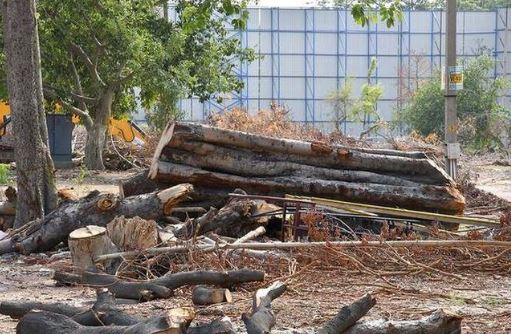Aditya Vaibhav | The TrickyScribe: “Water, water, everywhere, And all the boards did shrink; Water, water, everywhere, Nor any drop to drink.” The Rime of the Ancient Mariner, a poem by Samuel Taylor Coleridge about an old sailor who is compelled to tell strangers about the supernatural adventures that befell him at sea after he killed an Albatross, a friendly seabird, can aptly describe the situation in Kerala. Situation exacerbates as Kerala Floods continue!
How?
Regions affected by the recent monsoon rains were once classified as ecologically-sensitive zones (ESZs) by Western Ghats Ecology Expert Panel (WGEEP), also known as the Gadgil Committee due to being headed by Founder, Centre for Ecological Sciences, Indian Institute of Science, Bengaluru, Madhav Gadgil, submitted to Ministry of Environment and Forests, Government of India on August 31, 2011. Read the entire report here.
READ MORE: Pocket-friendly renewables all set to displace conventional energy sources
Gadgil Committee suggested that 1.4 lakh kilometers of Western Ghats be classified into three zones as per the requirement of environmental protection in the areas. The committee recommended strong restrictions on mining and quarrying, use of land for non-forest purposes, construction of high rises etc. in some areas.
Kerala government, however, rejected the committee report. None of its recommendations were adopted. The same Gadgil Committee Report has now become an albatross around the Kerala Government’s neck.
Policy follies blamed for the tragedy
Madhav Gadgil, in his subsequent media interactions, has blamed irresponsible environmental policy for Kerela floods and subsequent landslides. He also described it as a “manmade calamity”. He said that the 2011 report had recommended conservation of resources with the cooperation of local self-governments and people, but those recommendations were rejected.
Environmentalists till date believe that the committee’s recommendations were potent enough to protect the sensitive Western Ghat region. Extensive quarrying, mushrooming of high rises as part of tourism and illegal forest land acquisition by private parties as major reasons for the recent catastrophic Kerala floods.
Operation Madad
Operation Madad launched by Indian Navy has been further scaled up on Sunday to meet the increasing appeals for rescue from more parts of flood-hit south Indian state of Kerala.
Southern Naval Command (SNC) rescue teams have been augmented by Gemini boats, divers and other resources from both Eastern and Western Naval Commands of the Indian Navy. Over 350 rescued people have been accommodated at the T2 hangar inside the Naval Base, which has been converted into a makeshift relief camp. Another relief camp set up by the Naval Armament Depot, Aluva, catered for another 170 persons.
Makeshift relief camps
The Naval Kindergarten School within the Naval Base has also been converted into a relief camp and approximately 250 persons have been accommodated there. Two Kendriya Vidyalayas, close to the Naval Base and administered by SNC, have also been kept standby as additional relief camps to house more displaced persons.
A community kitchen set up by INS Venduruthy at the campus of Cochin University of Science and Technology is catering for 7,000 people. At least 17 cooks, four officers and 13 staff are working relentlessly to serve all three meals and tea twice a day for those in distress. Kerala government authorities have also contributed to this kitchen, providing condiments and other edible items for its smooth functioning.
Elaborating on Kerala floods, Squadron leader V Joshi told mediapersons, “The situation is quite bad. We are trying to rescue people. Right now we are giving them food and water so that they can at least survive until the water recedes.”
Naval Deployment
Operation Madad on its tenth day of commencement on Saturday deployed 72 diving teams distributed among multiple locations. Eight newly inducted teams were sent out to various locations to augment those already in place. 42 teams with one Gemini boat each are deployed in Ernakulam district at various places.
One team is at Pizhala island, one at Edapally, three at Perumbavur, 16 at North Paravur, 14 at Aluva, four at Muvattupuzha and two at Kadangallur. In the Thrissur district, the deployment at Chalakkudy has also been augmented to 10 teams, while in Pathanamthitta district, 10 teams are deployed at Chengannur and one team each at Ayroor and Pullad.
READ MORE: Repetitive wildfires in California, no lessons learnt
Meanwhile, the deployment at Wayanad district was scaled down as conditions have improved there and presently two naval teams with Gemini boats are deployed at Porunnannur. Altogether, rescue teams have been able to rescue more than 3,375 people by boats on Saturday.
In addition to the aforementioned efforts, all air assets available at INS Garuda have been extensively utilised for winching up stranded personnel, transfer of stores, boats, relief material, etc.
IAF into action
Air rescue has been carried out at various places of the three worst affected districts such as Thrissur, Ernakulam and Pathanamthitta. Various aircraft including ALH, Sea King, Chetak and MI 17 (of IAF) were able to rescue more than 154 people till now. Food packets along with bottled water were also airdropped on the rooftops of various buildings in the flood-hit areas.
Air India to evacuate flood-hit people too
As the Kochi airport is closed due to Kerala floods, Air India has planned to operate from Kochi Naval Base and evacuate people stranded in flood-affected areas. Air India in its statement said, “As an exemplary initiative to fly out stranded people, AI’s subsidiary Alliance Air operated a non-commercial “proving flight” on an ATR (turboprop) to Kochi’s naval base with a team of DGCA, AAI and Flight Safety officials… This whole exercise is aimed at confirming the feasibility of having Alliance Air operate more flights to Cochin’s defence airbase with turboprops to evacuate passengers.”
Total Views: 2,72,705















